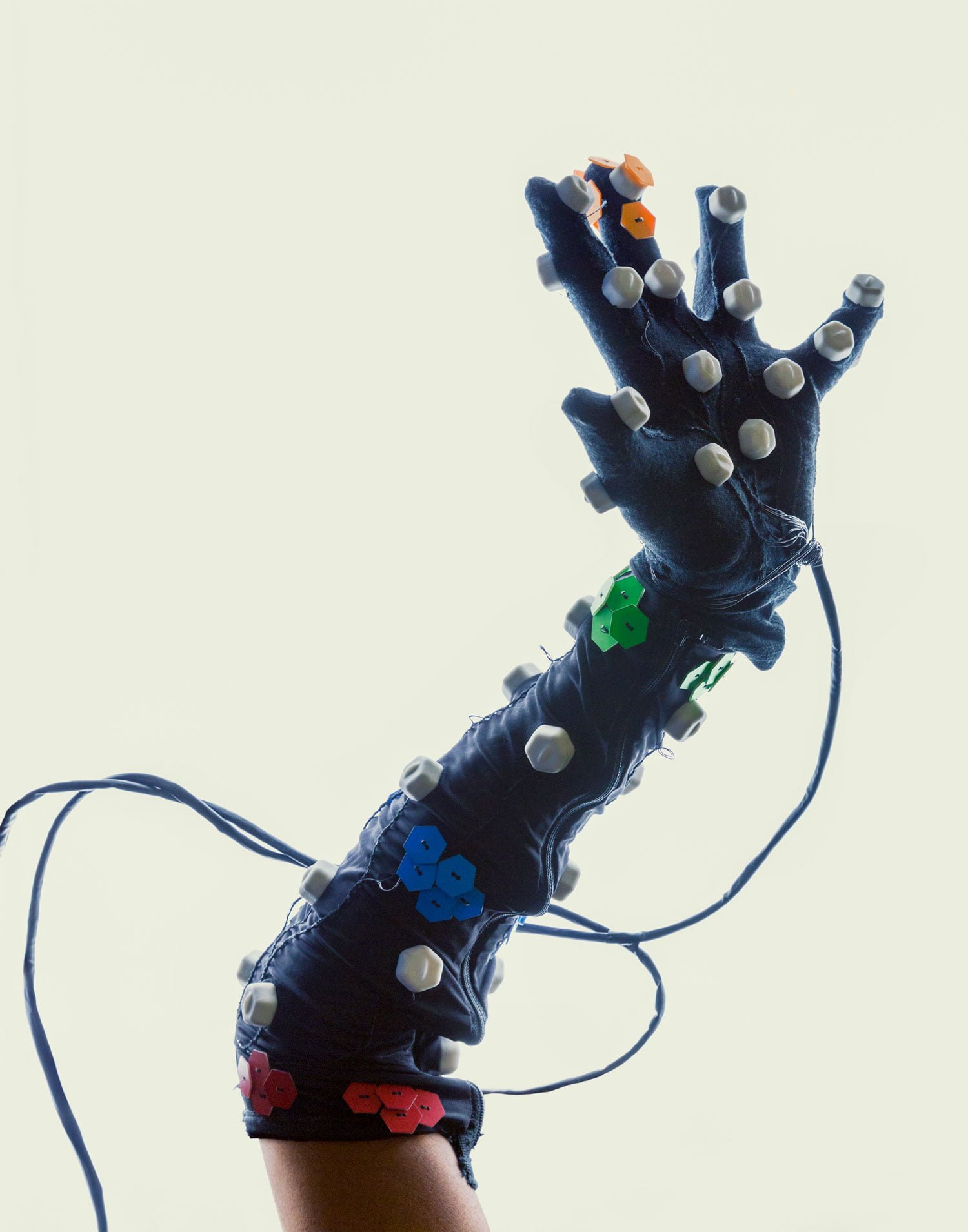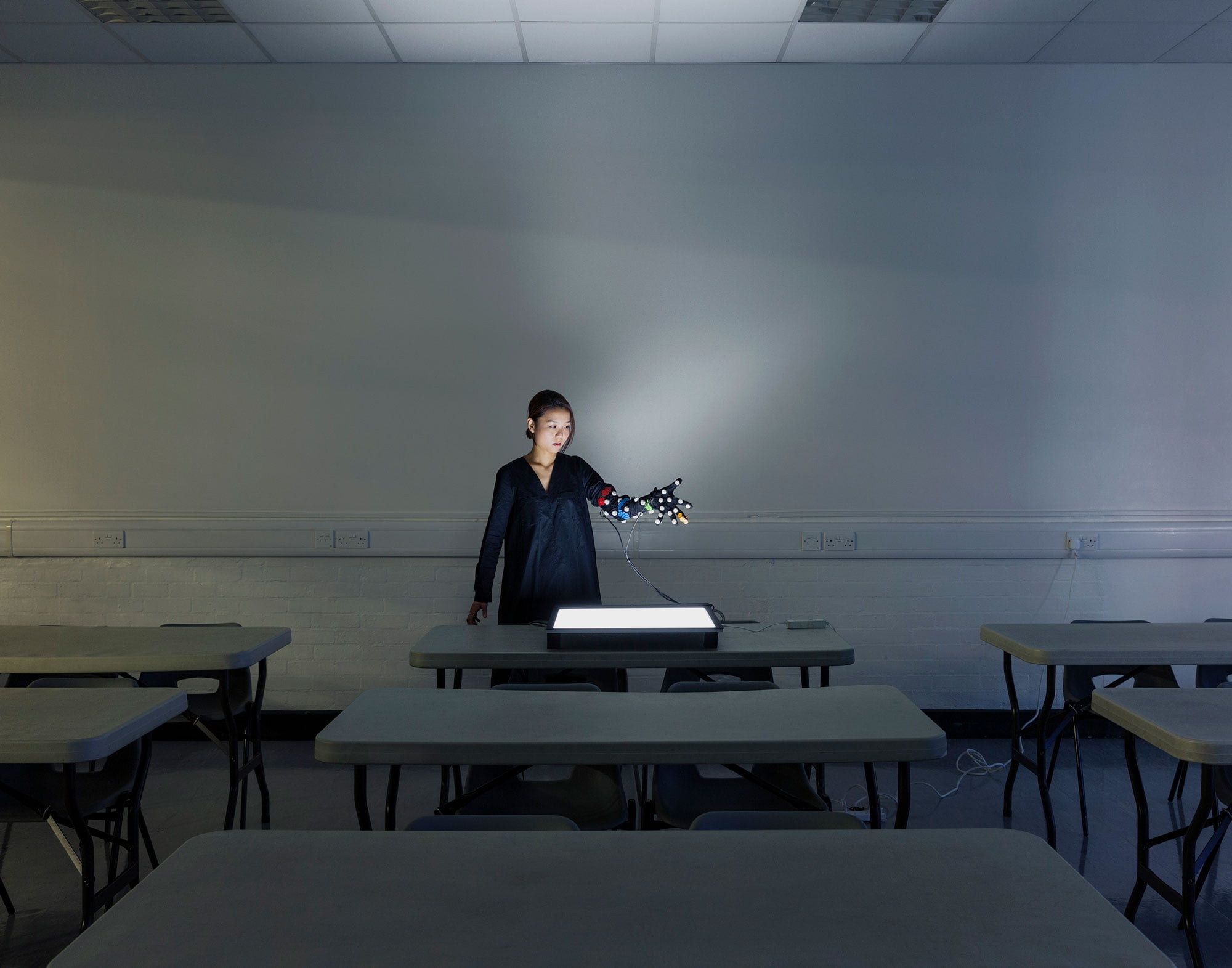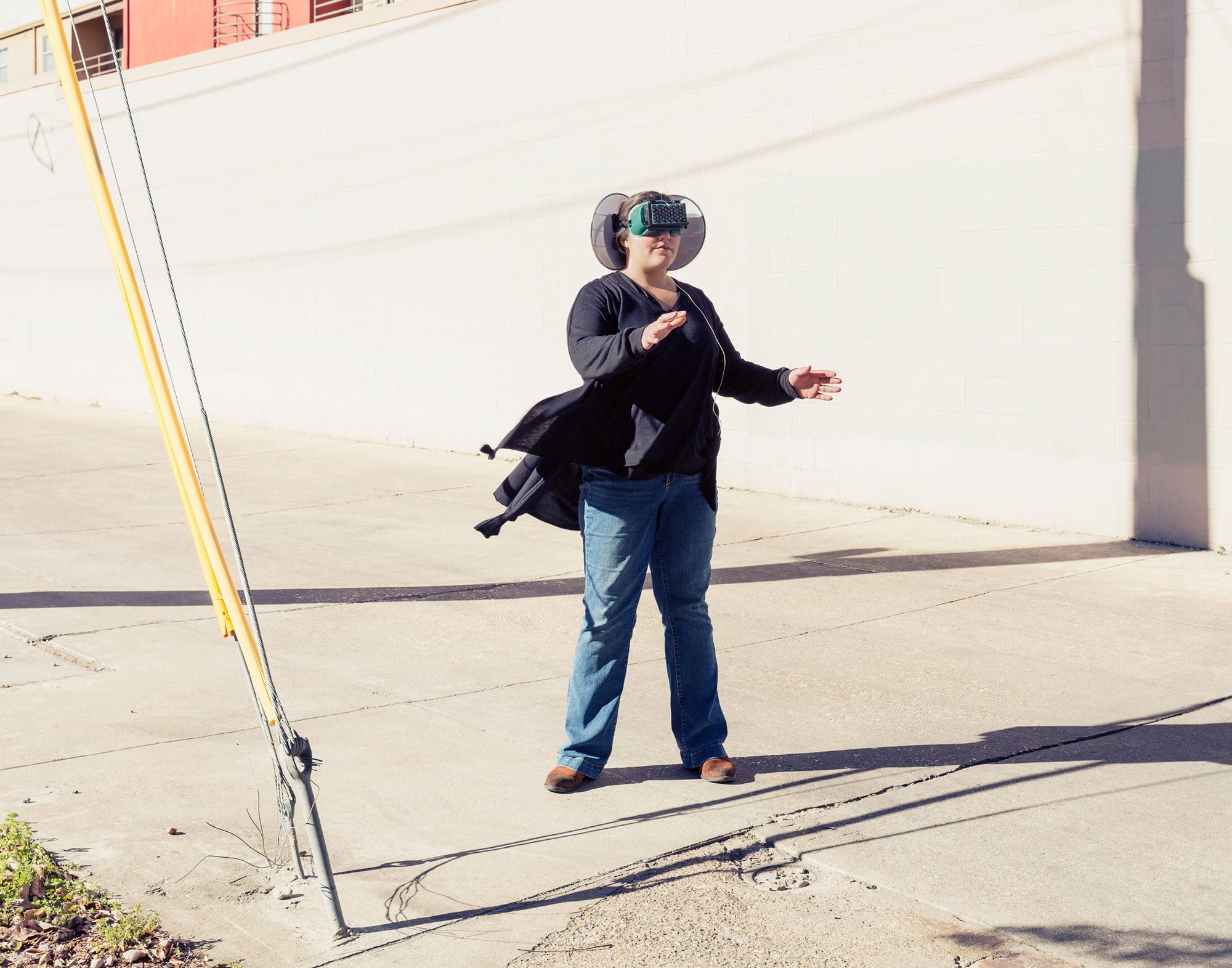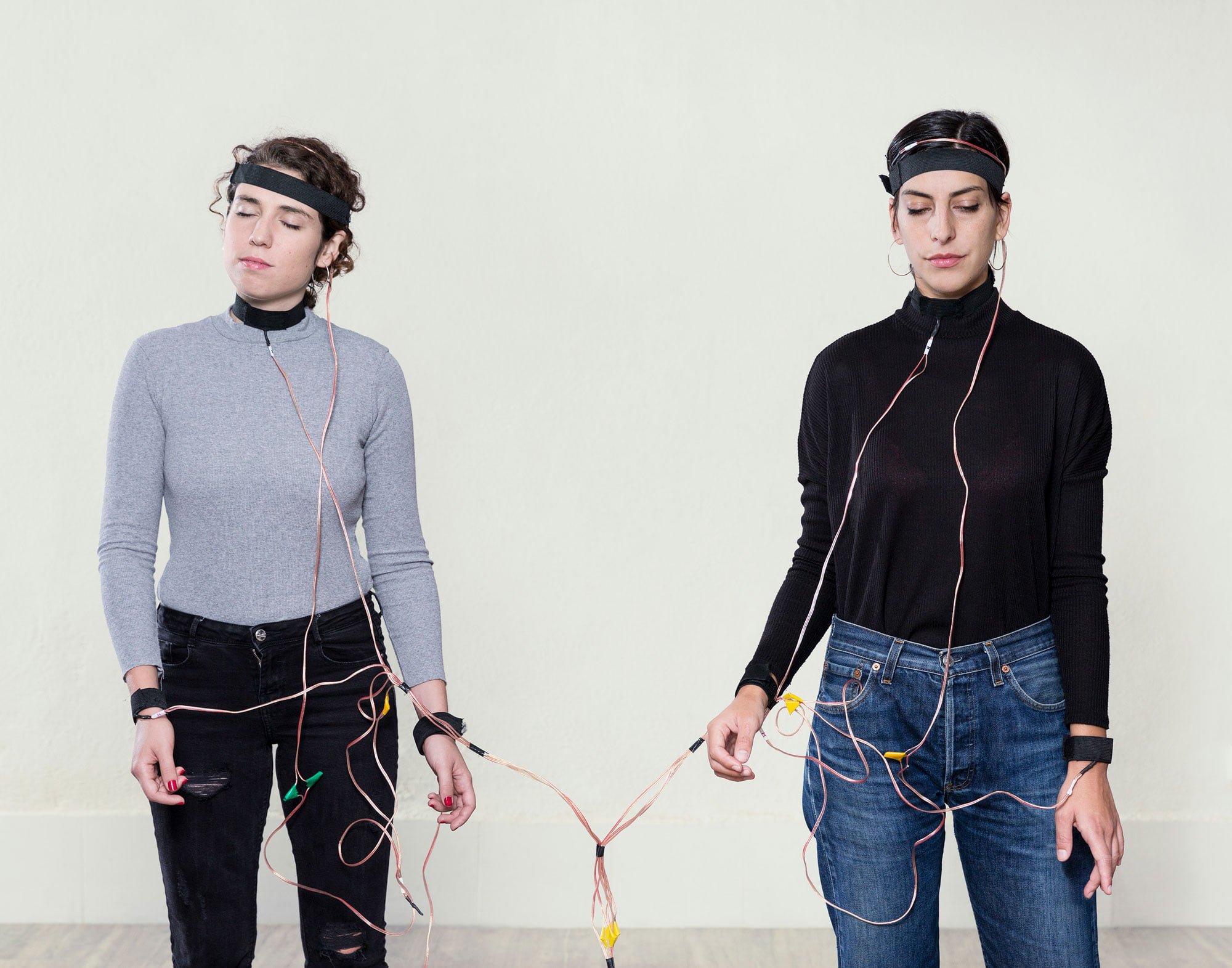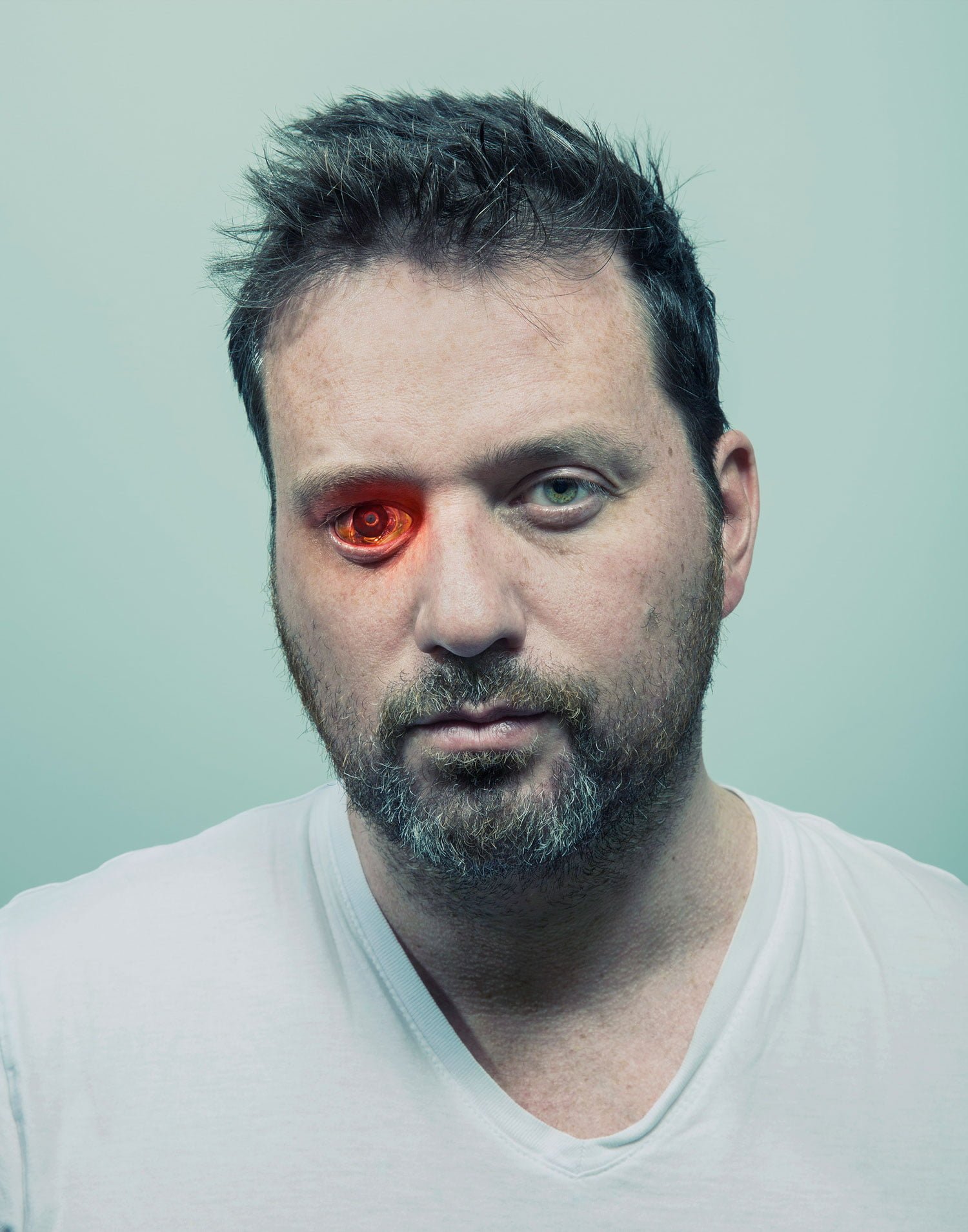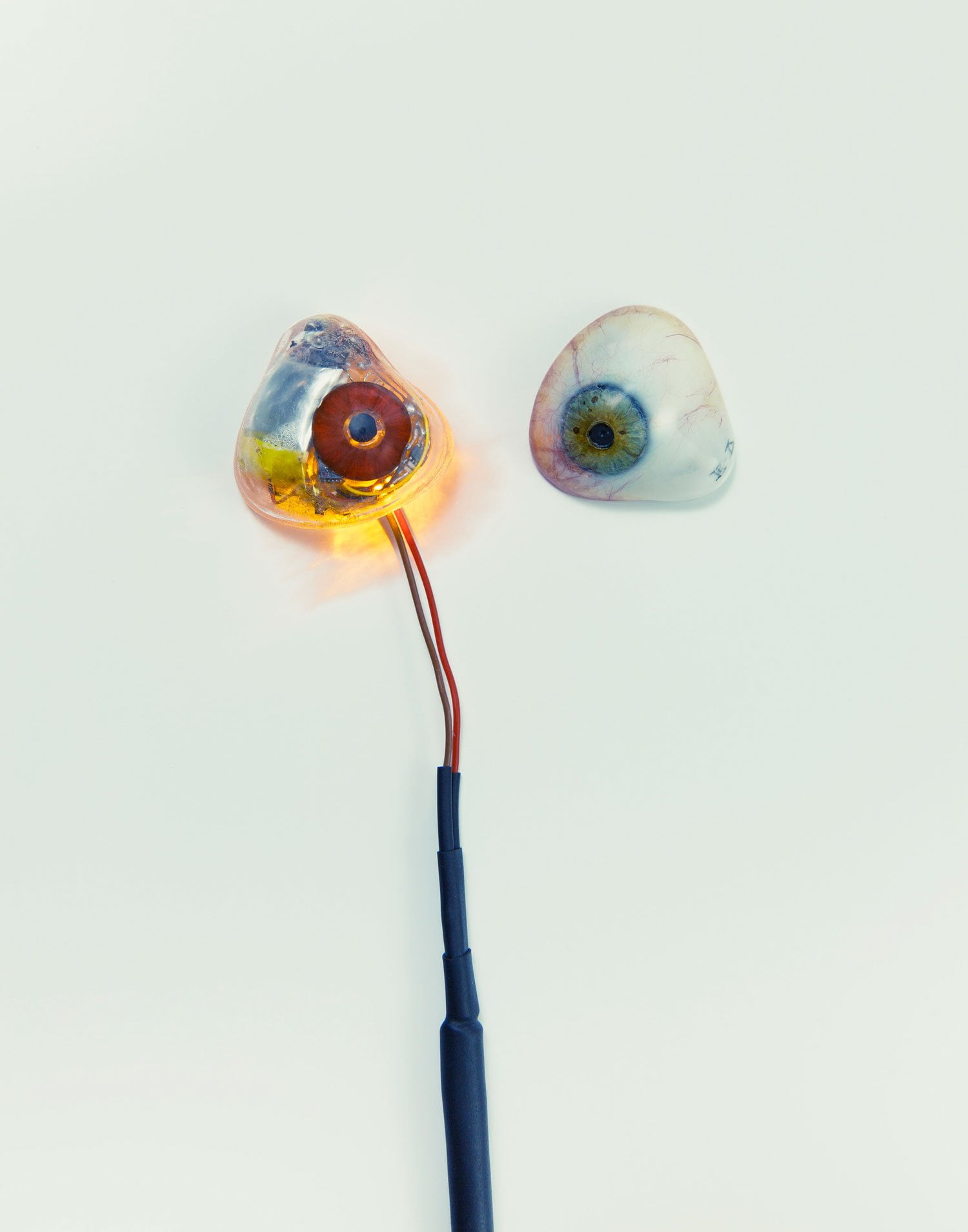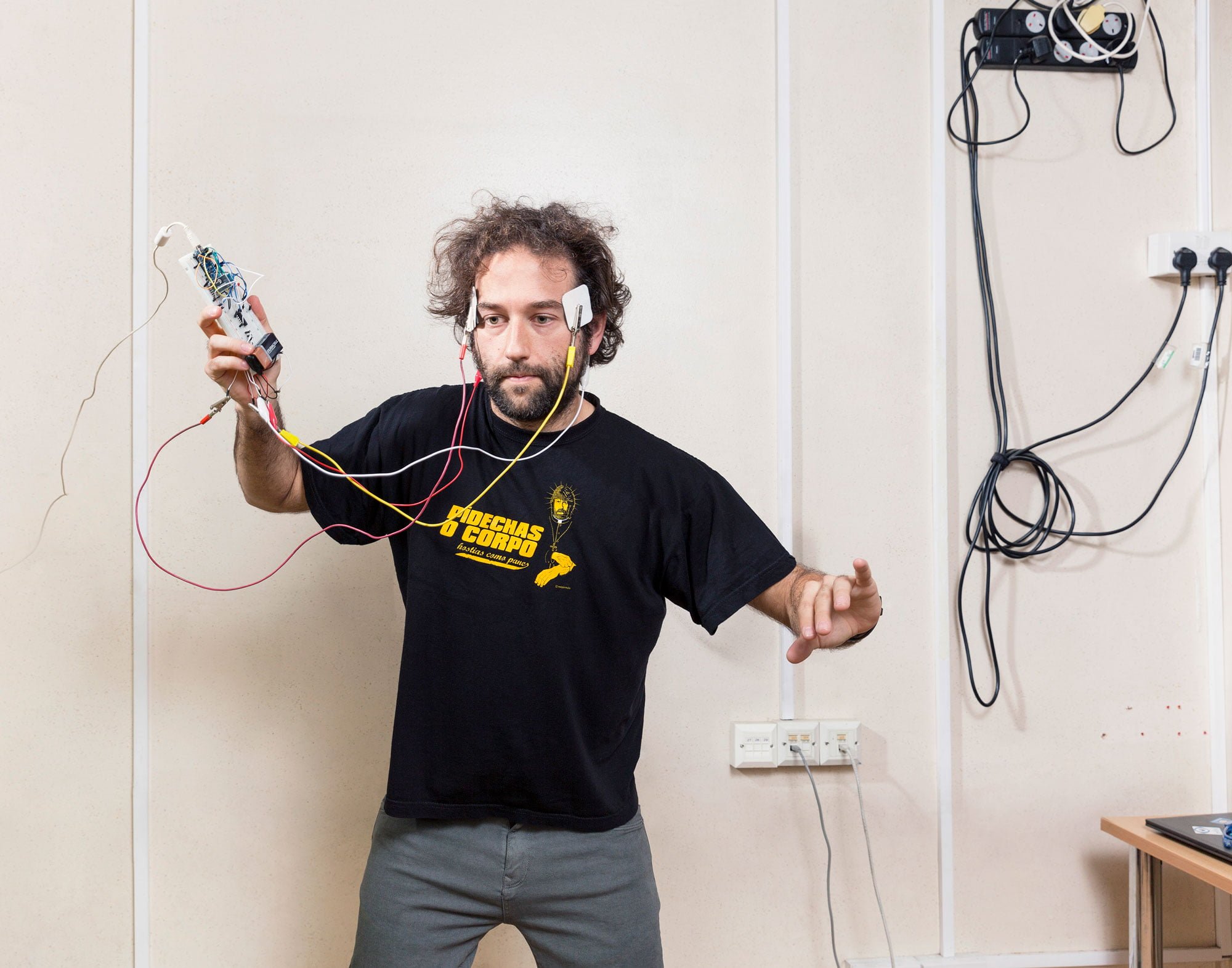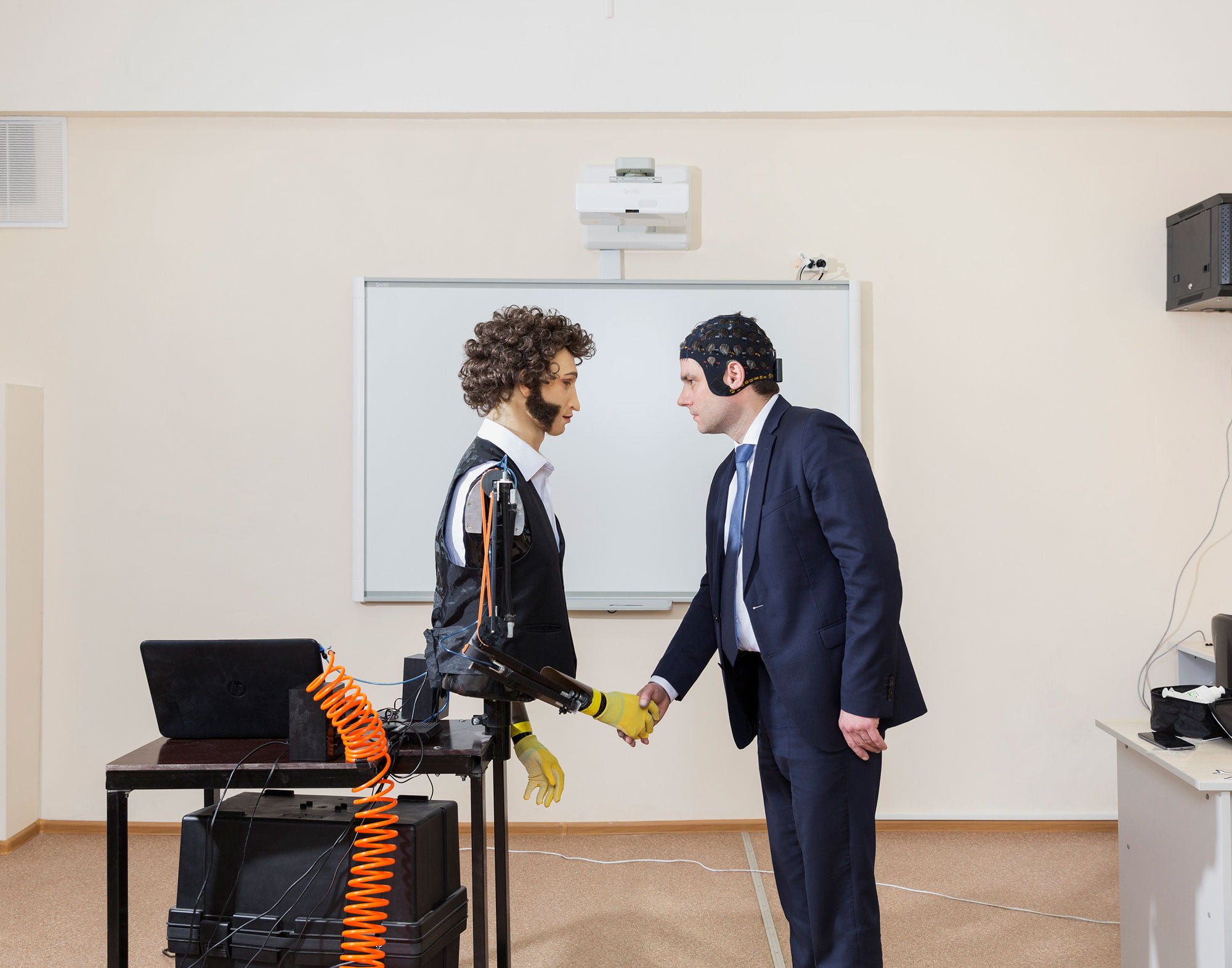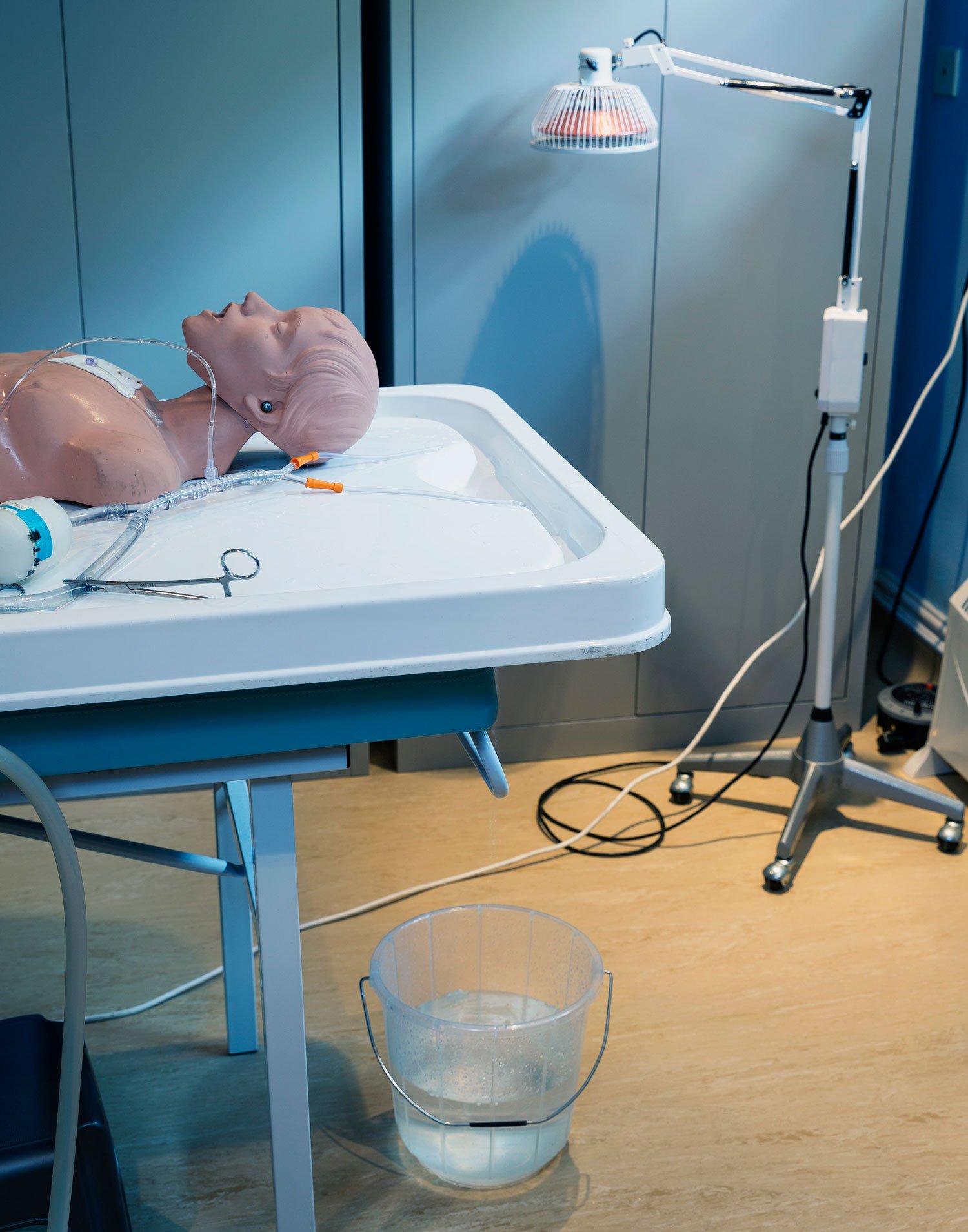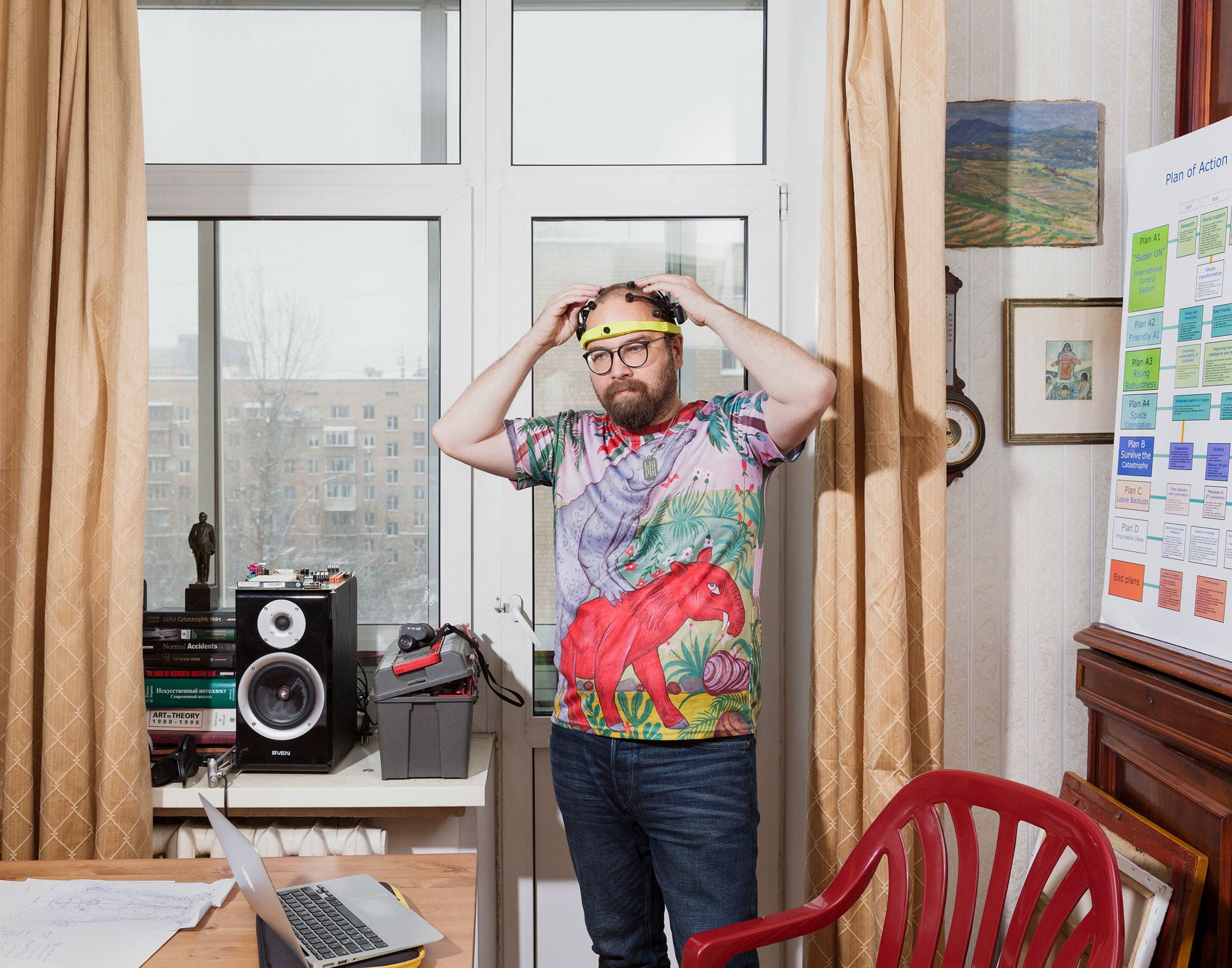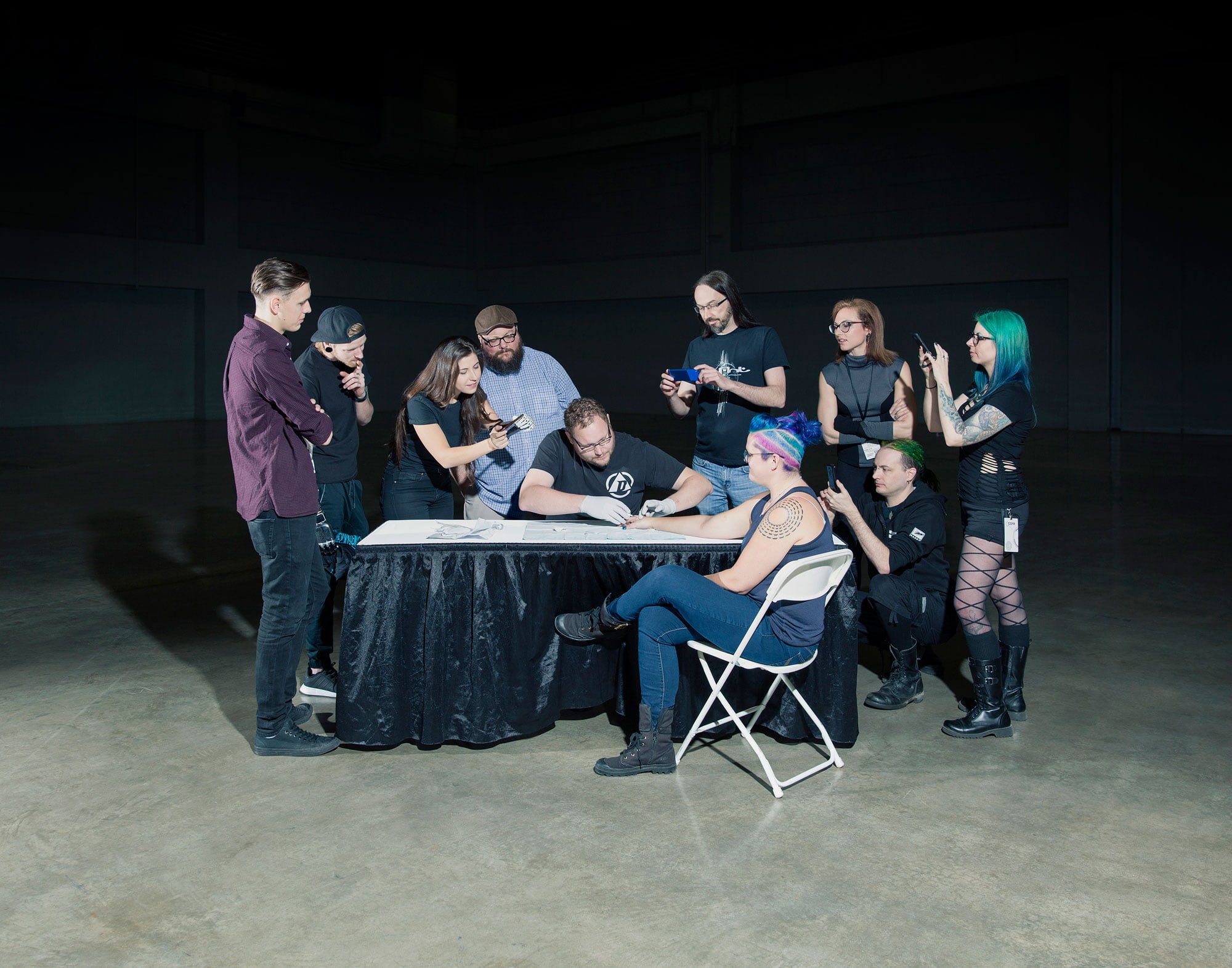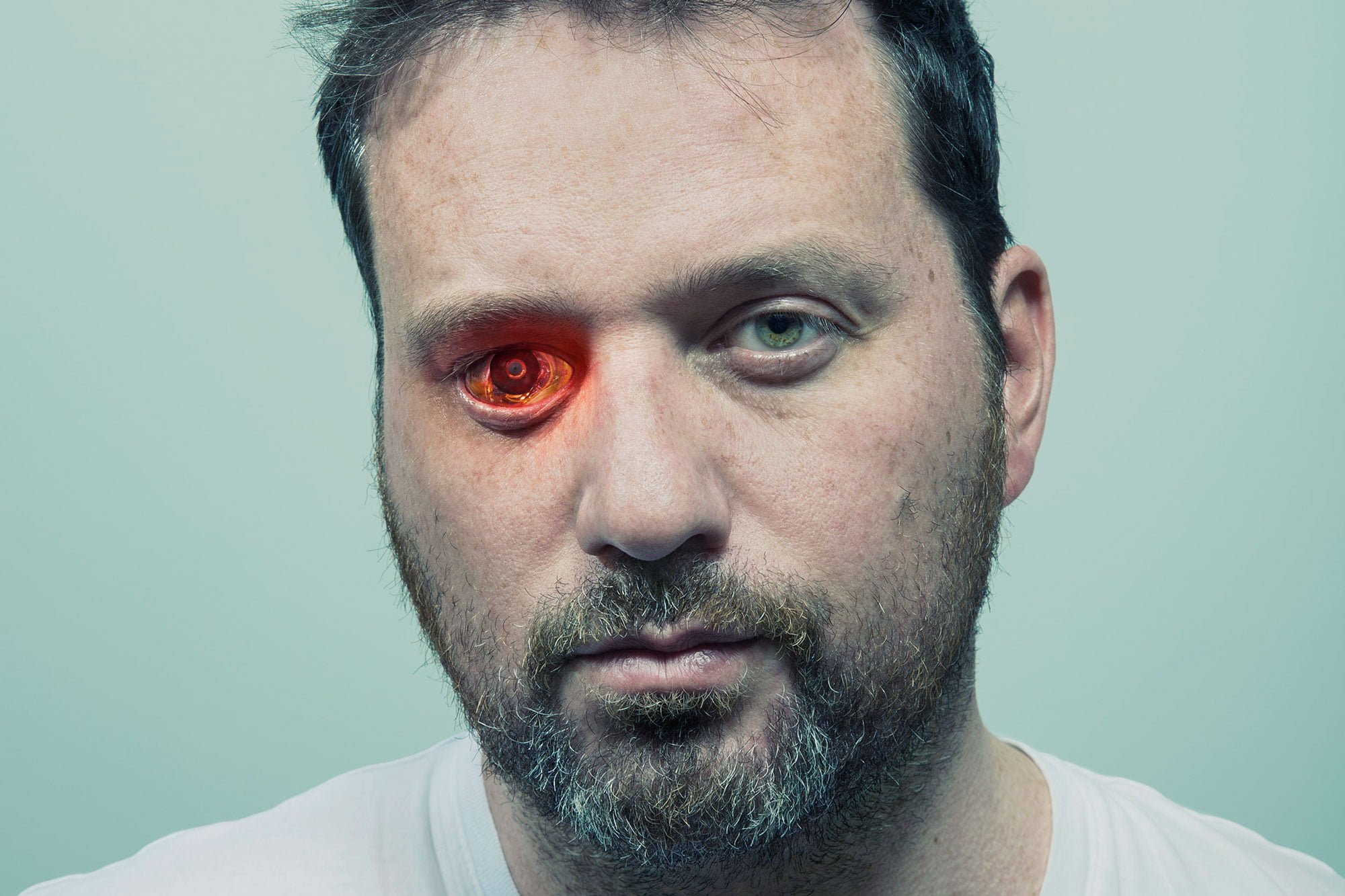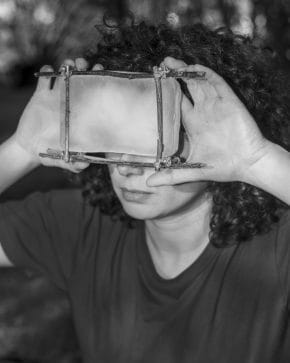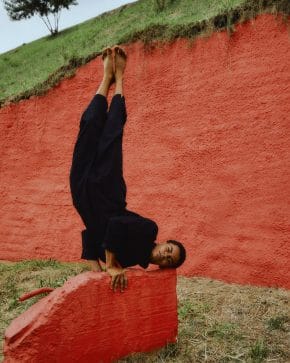This series of photographs by David Vintiner shows people using technology to enhance their bodies and senses, overcome their limitations and push the boundaries of what it means to be human.
Virtual reality. Body augmentation. Robot faces. It sounds like an image of the future.
Yet somehow David Vintiner’s photographs don’t feel futuristic. If anything, they feel remarkably mundane. The subjects may be lost in a virtual world, but they stand in familiar everyday settings, with wires trailing around them, and hands reaching into nothingness. They seem as earthbound as ever.
The images in the project I want to believe show people using technology to augment what their bodies can do – sometimes as a result of an injury or medical condition that limits them, and sometimes just for the hell of it. They also show researchers playing around with the human brain, robots that mimic human movement and emotion, and people who plan to freeze their bodies in the hope of coming back to life in the future.
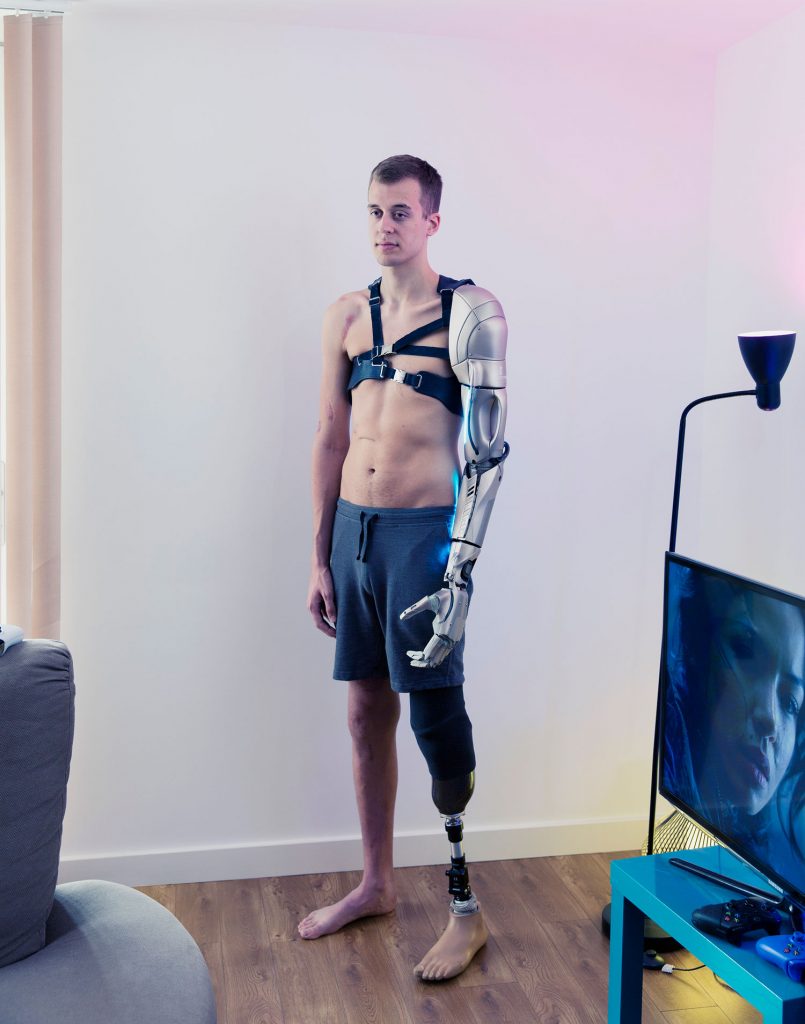
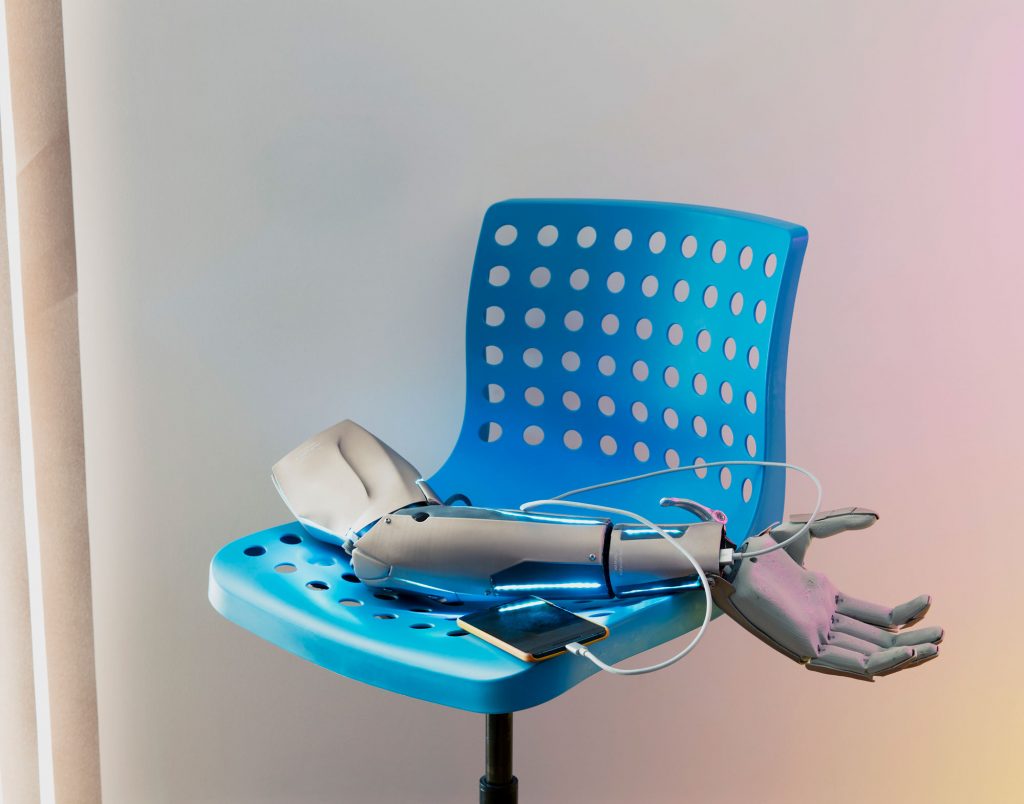
London, UKJames Young lost an arm and a leg in a train accident. So the games publisher Konami made him a special arm inspired by the Metal Gear series, of which he is a big fan. The $60,000 carbon fibre limb is controlled by sensors that detect minute muscle movements in Young’s back. It also features a USB phone charger, a heart rate monitor and even a small drone.
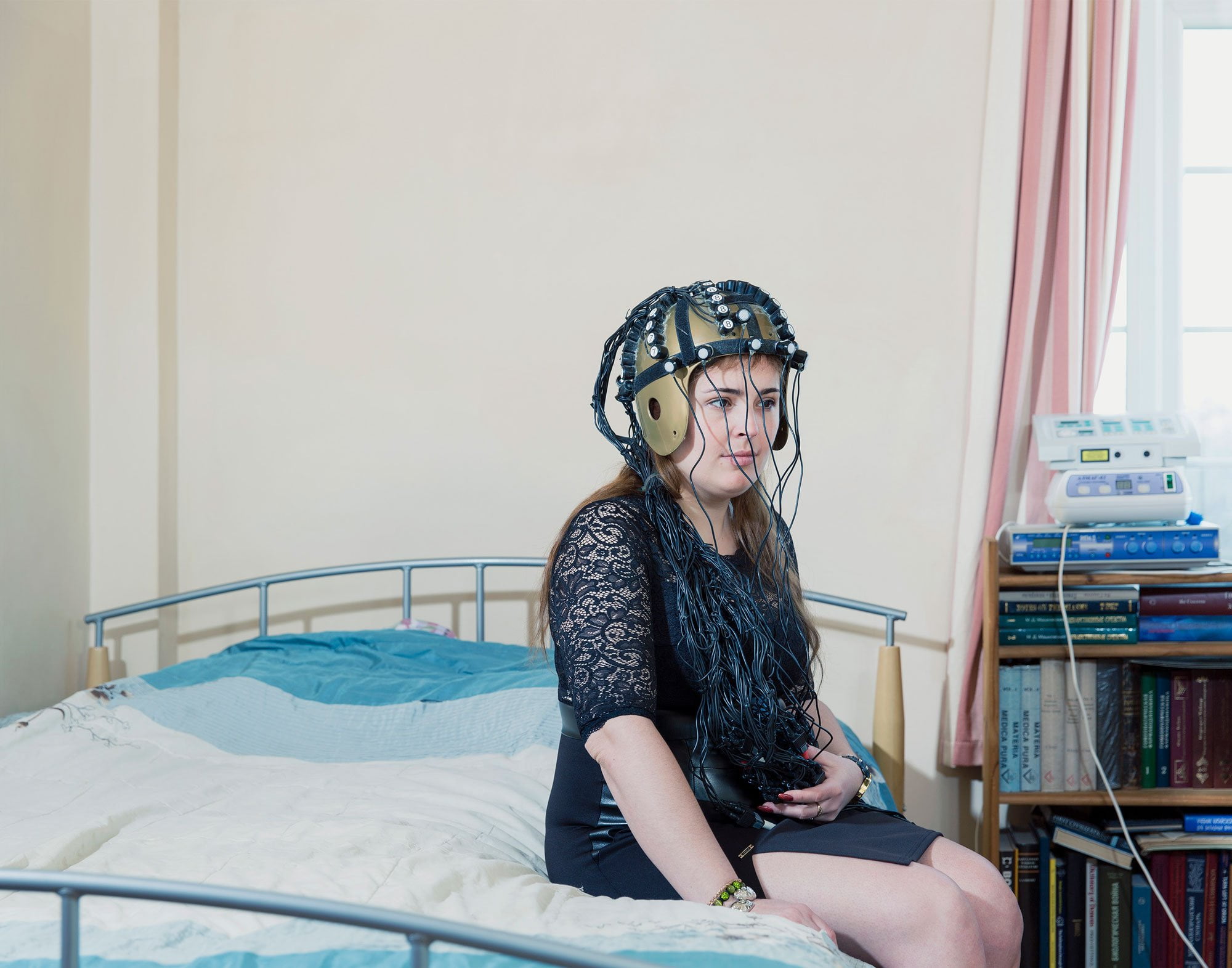
London, UK
Sasha is wearing the ‘God Helmet’, which stimulates the temporal lobes to test the effect on the mind. In experiments, many users have reported sensing a “presence”, which some interpreted as divine or extra-terrestrial. The helmet’s makers believe this is because it influences the parts of the brain that give us our sense of self – but other scientists are not convinced.
Working with art director Gem Fletcher, Vintiner wanted to show how these activities are not confined to slick, corporate settings, but are going on “in people’s garages, at home, in universities… You see a lot of bits of gaffer tape and glue guns and things held together with wire. It brings it back down to earth. These are things that are happening now. These people are working on shaping the future of humanity now, in their rooms.”
“It’s the mindset that the human body is just a bag of chemicals”
Vintiner believes there’s a very specific mindset that drives the people in his portraits to do these things. “It’s the mindset that the human body is just a bag of chemicals,” he explains, “and therefore that you can write it down. It’s an algorithm, a formula. And if you can write it down, you can replicate it on a computer. You’re just listing out chemical reactions, essentially. Most people find that quite cold, because we’re not talking about the soul, as such, we’re talking about an algorithm.”
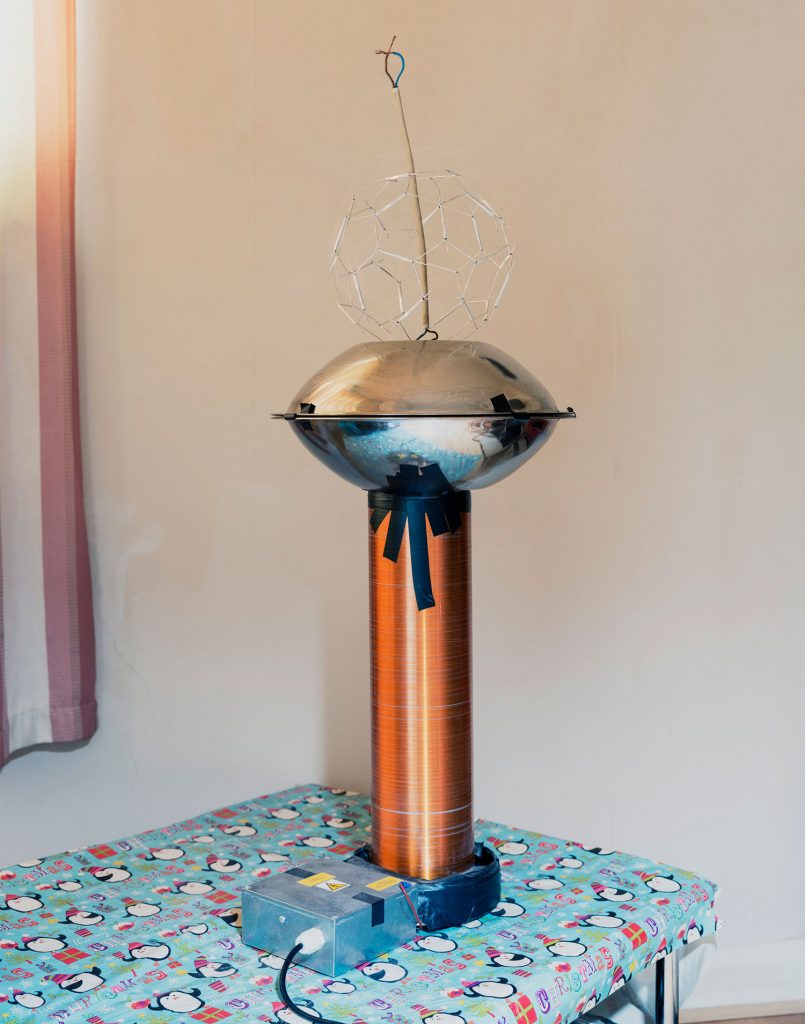
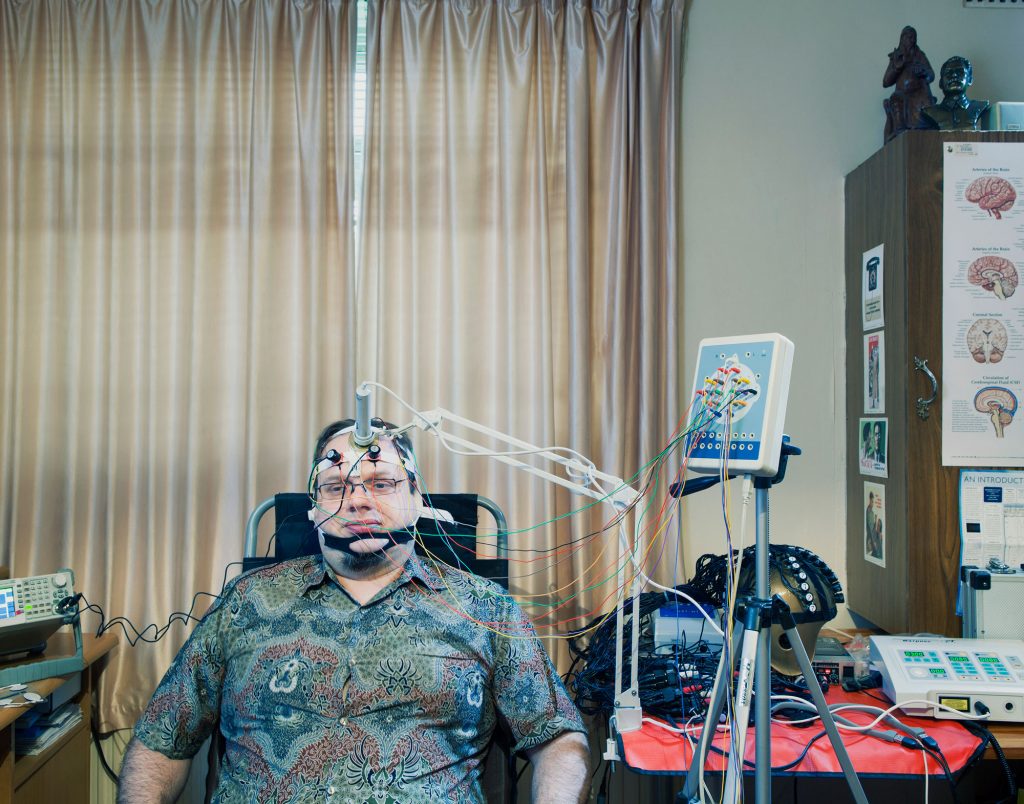
London, UKAndrew Vladamirov is a brain hacker. He collects and analyses brain data, stimulating his own brain and those of volunteers using various methods. He believes he can combat fatigue, sharpen concentration and boost memory by firing lasers at different parts of the brain.

Winconsin, USBrainPort is an electronic visual aid that lets you “see” with your tongue, by translating information from a wearable camera into gentle electrical stimulation. Users feel moving bubble-like patterns on their tongue which they learn to interpret as the size, shape, location and motion of objects.
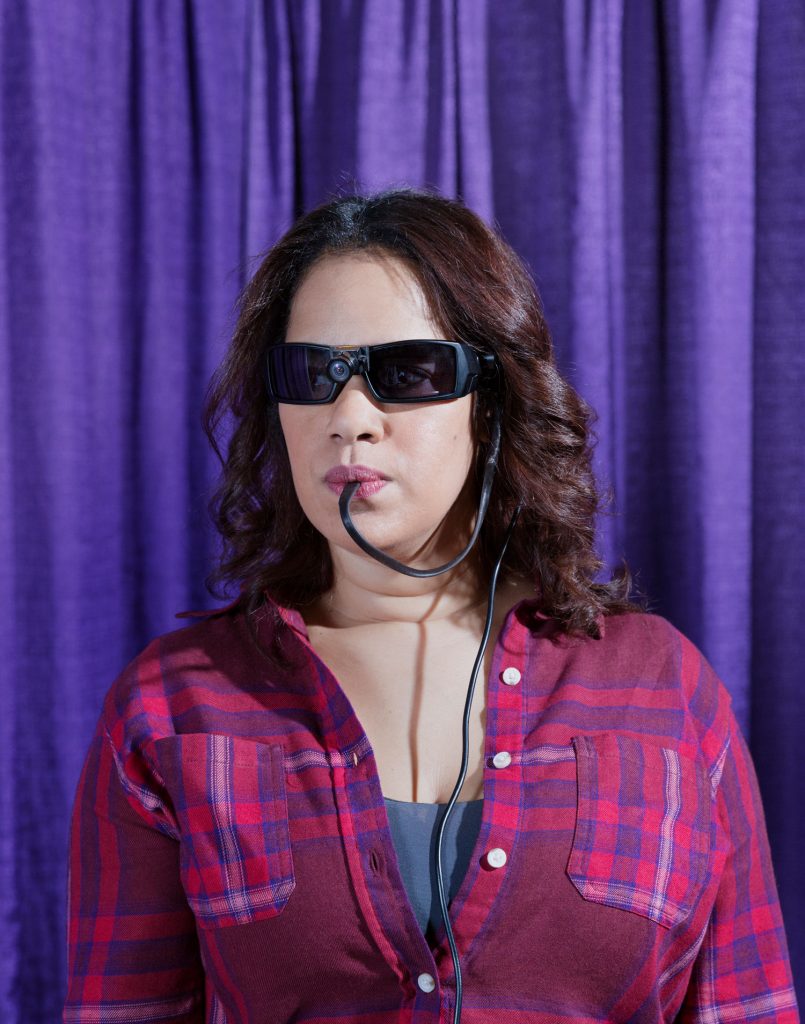
And yet – as the project’s title, I want to believe, suggests, it’s also about concepts like hope, and even faith. “We’ve always had this idea that transhumanism was a new form of religion,” says Vintiner. “Although all of the ideas are very forward-looking, they’re actually the ideas of ancient religion: rebirth, immortality, humans becoming gods… when you start looking for religious crossover, there’s a lot.”
From one point of view the images seem cold, but at the same time they’re “very emotional”, says Vintiner. There’s a melancholy about them, a sense of people yearning for something more. Vintiner says he admires many of the subjects of his photos. “Throughout history, science is littered with mavericks and outliers with ideas that seem outlandish to society at the time, but it’s these people who push people forward in the long run.”
“Some of these things will become reality, some will fall by the wayside, but without these outliers working outside the usual constraints we wouldn’t make the great leaps forward. It seems outlandish, but they’re willing to give it a go.”
“It seems outlandish, but these people are willing to give it a go”

London, UKDr Caroline Falconer takes part in a VR exercise designed to combat depression and anxiety. In the virtual world, she comforts a crying child. Then, the roles are reversed, and she experiences her own compassionate response from the child’s point of view. “It’s almost like being able to have a kind word with yourself in a physical way,” she says.
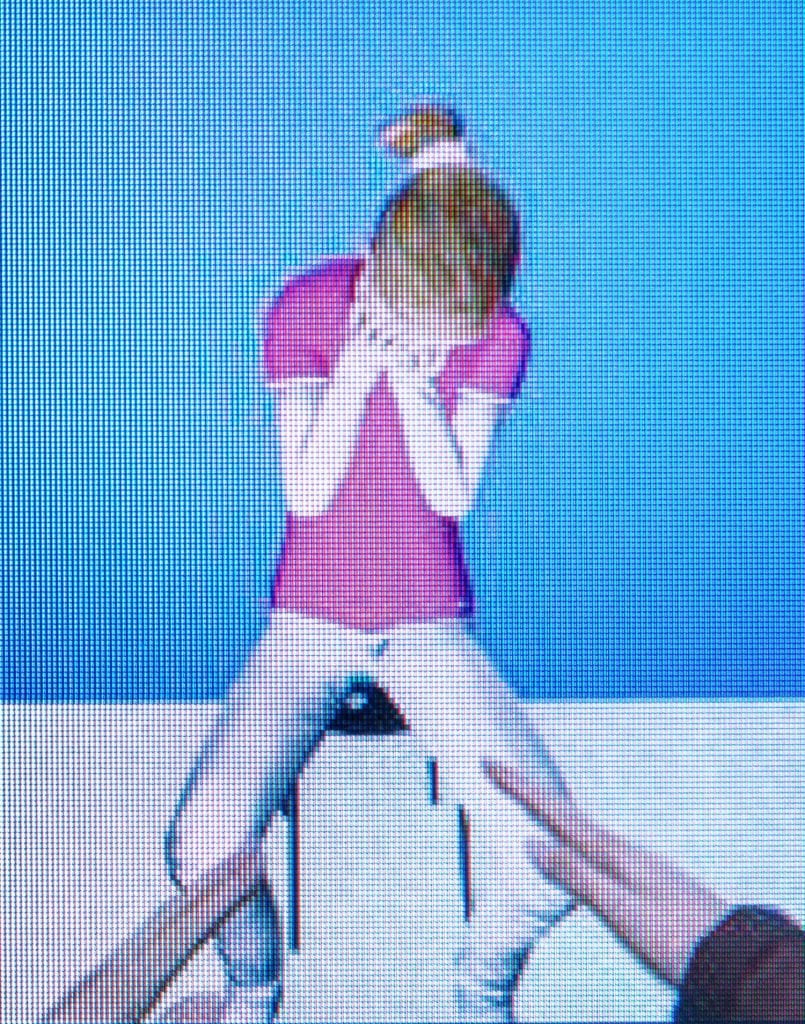
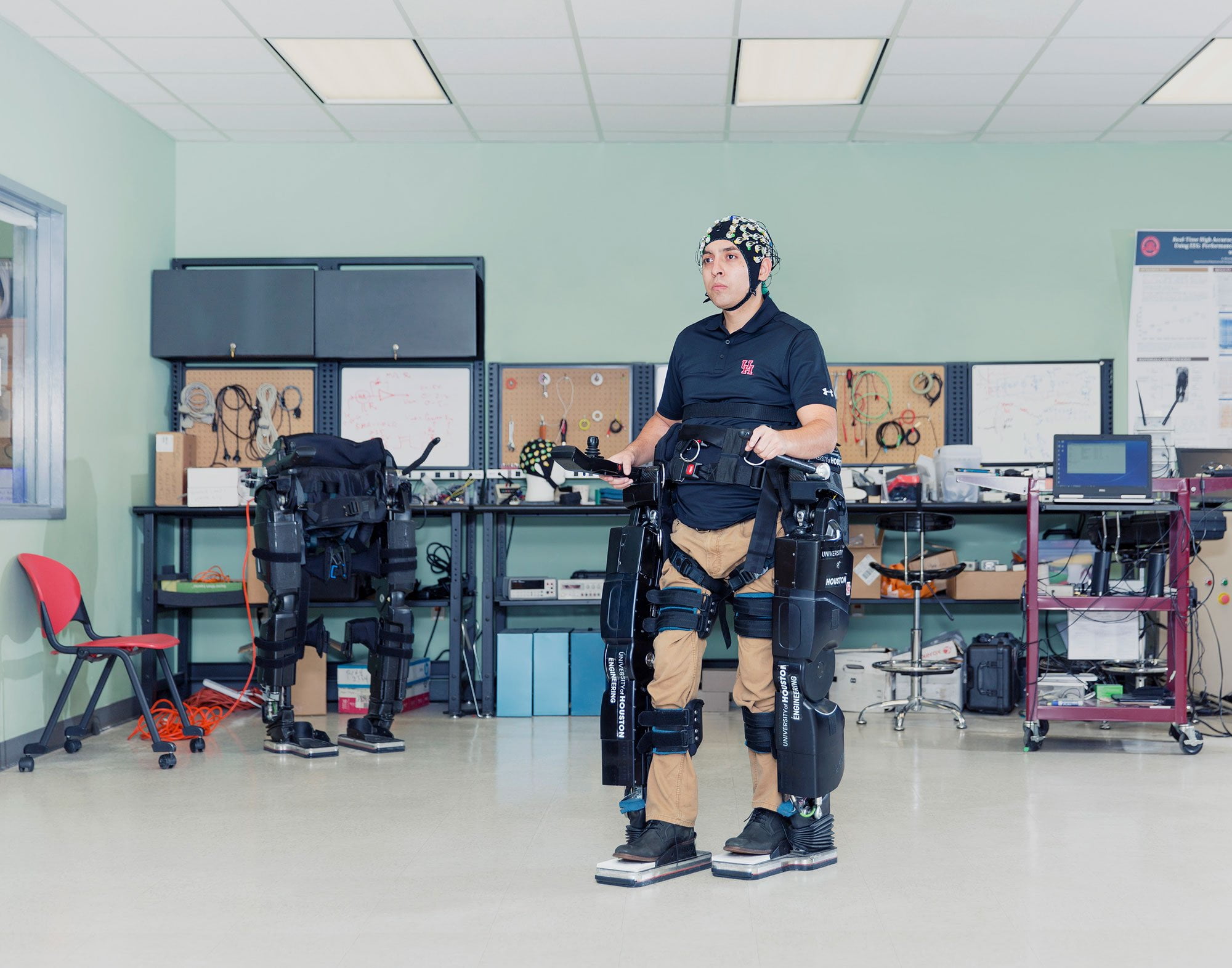
Houston, US
This brain-controlled exoskeleton helps restore quality of life for people with disabilities. The system reads the user’s brain activity to control the powered limbs, enabling the user to walk. Eventually, systems like this could replace wheelchairs.

Barcelona, Spain
Moon Ribas can feel earthquakes. Thanks to a chip in her elbow that connects to online seismographs, she perceives the planet’s seismic activity through vibrations in her body. She describes it as being like having two heartbeats.
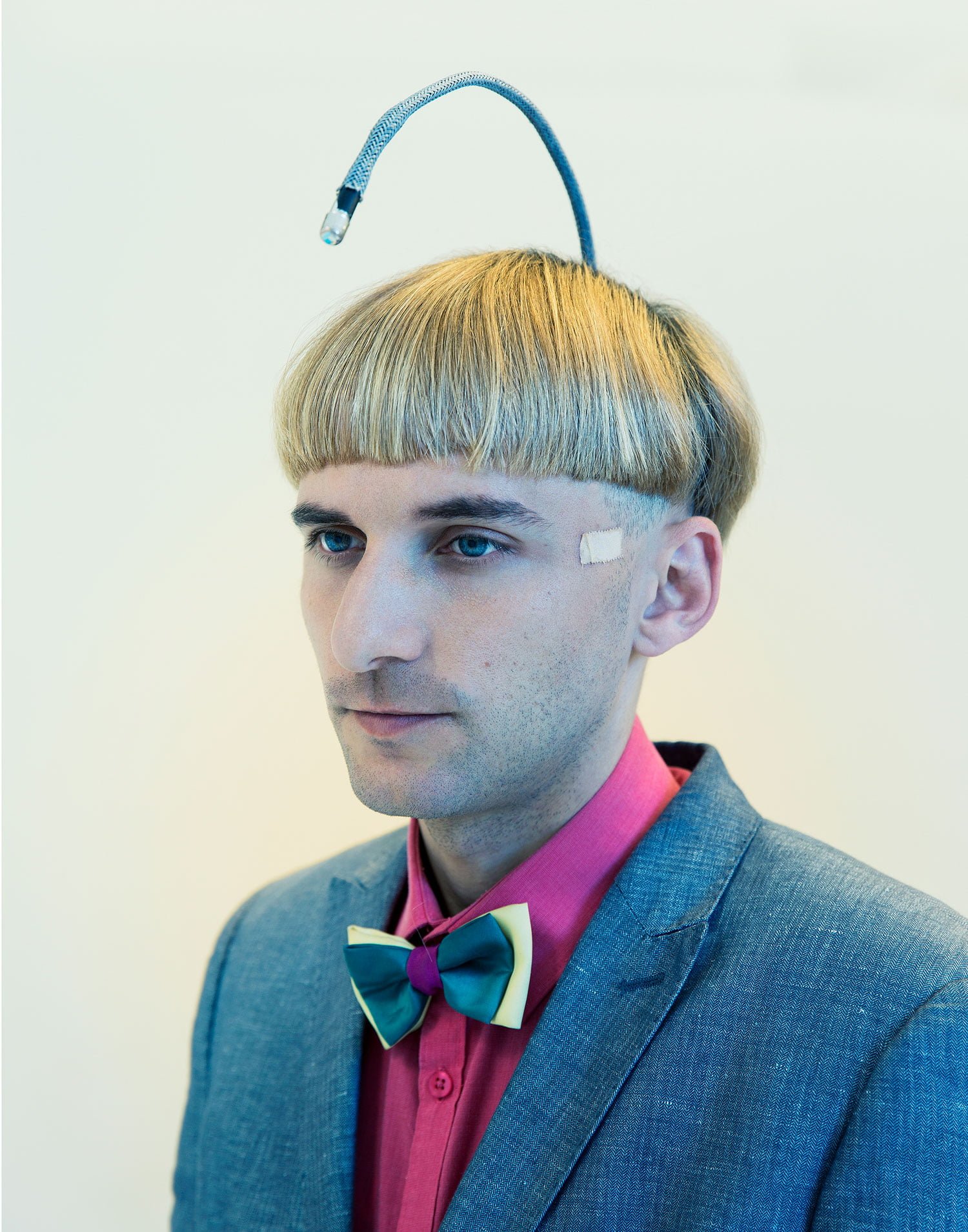
Barcelona, Spain
Instead of using tech to fix his colour-blindness, artist Neil Harbisson used it to go beyond the human visual spectrum. He had an antenna implanted into his skull to let him perceive colours including ultraviolet and infrared, as audible vibrations. When he sees a painting, he also hears it.
“These things are happening now. These people are working on shaping the future of humanity now, in their rooms”
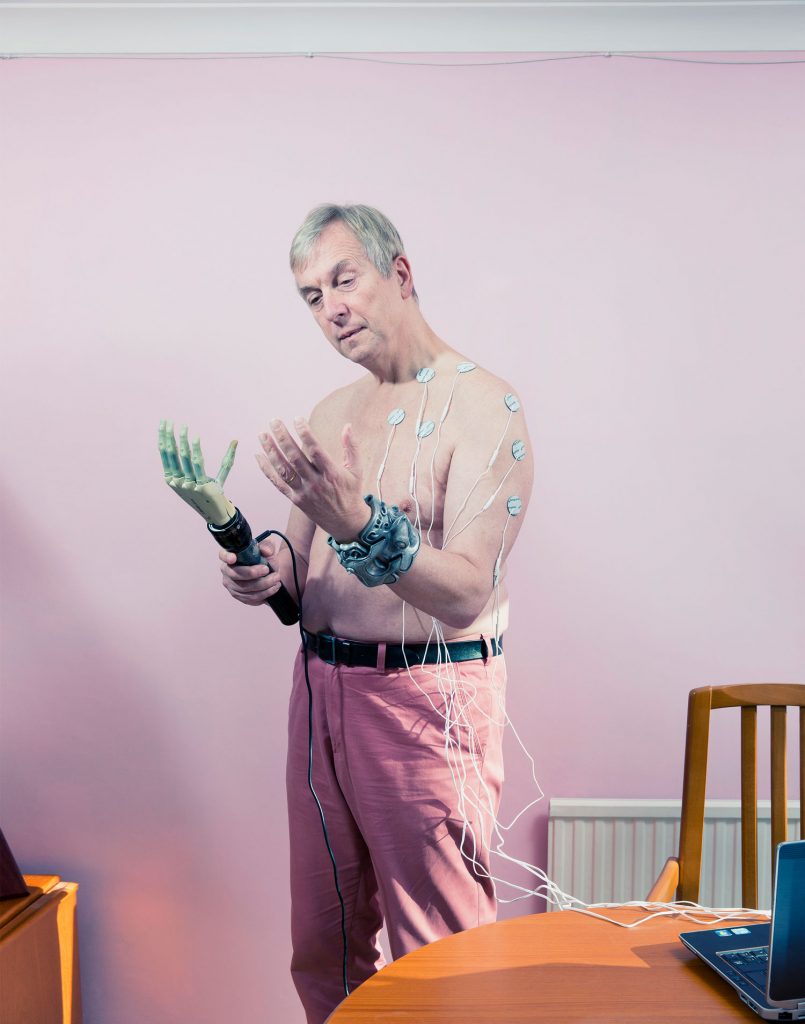
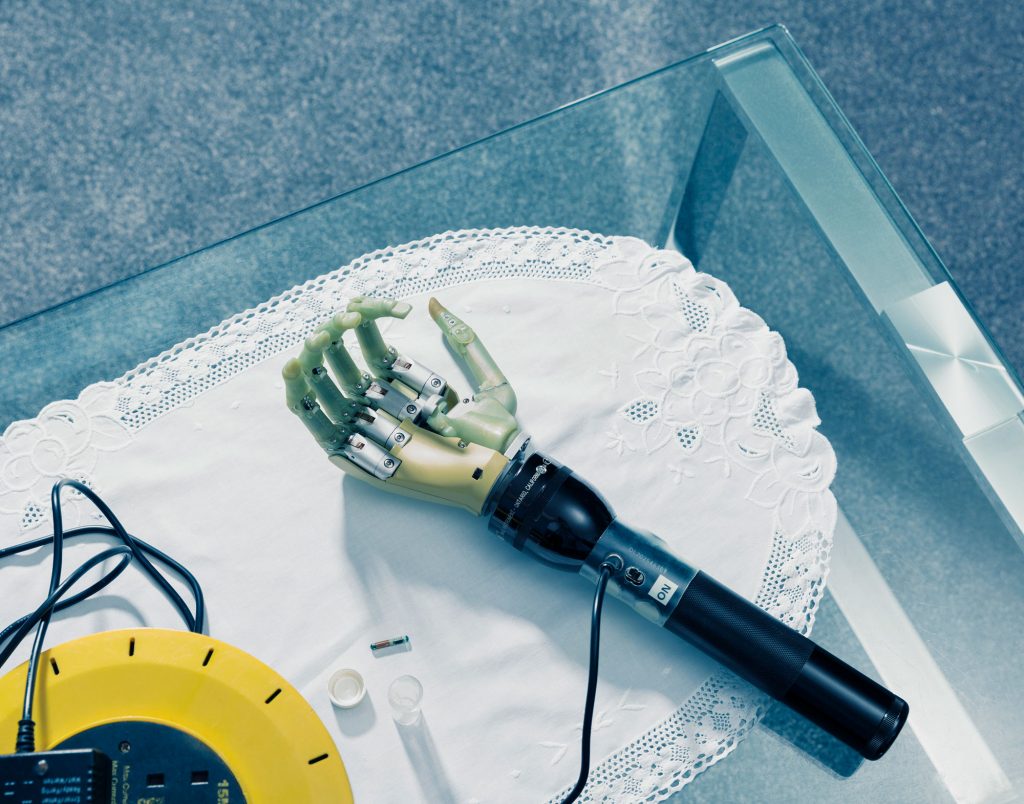
Reading, UKProfessor Kevin Warwick is considered by many to be the world’s first cyborg. Kevin had a device implanted into his arm enabling him to control a robot hand with his brain signals. Warwick even connected himself to his wife’s nervous system so he could sense her gestures, an experience he describes as “more intimate than sex”.

London, UK
Liviu Babitz has a matchbox-sized implant that delivers a short vibration when he’s facing north. It’s a new way of sensing direction using the earth’s magnetic field, similar to how migratory birds find their way.
